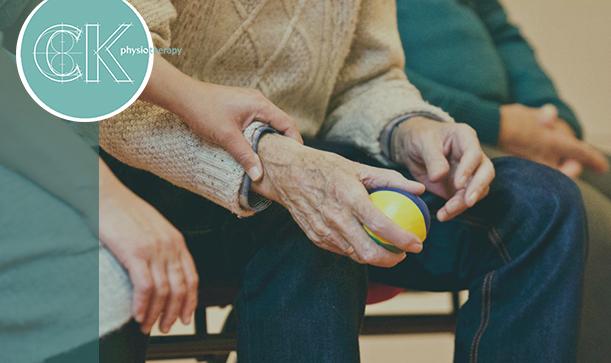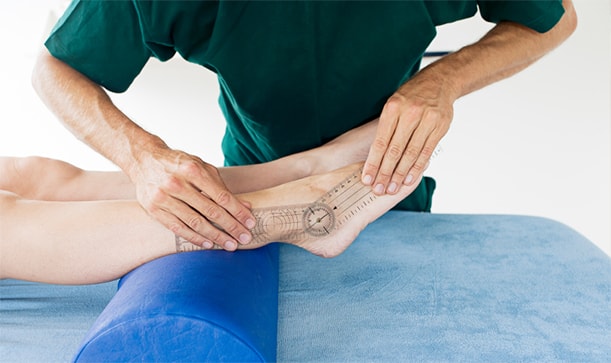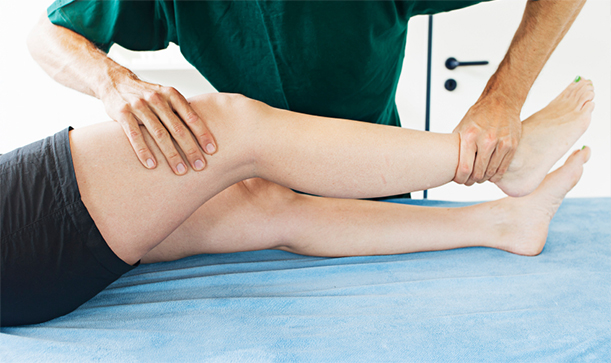CK Physiotherapy
AREAS COVERED
W7, W5, W13, Ealing, West London
57 Elthorne Avenue
Hanwell, W7 2JY
T: 020 8566 4113
M: 079 572 46185
E: info@ckphysio.co.uk
Location / Parking
We are situated in Hanwell, between Boston Manor Road and Northfields Avenue, south of the Uxbridge Road.57 Elthorne Avenue
Hanwell, W7 2JY
There are parking restrictions Mon - Fri 9-10am and 2-3pm. If you need a permit during this time please inform your therapist when you arrive. There are no parking restrictions at other times.
Opening Times
Please phone the number above during working hours to make an appointment. Our reception service will be happy to book your session.
London Underground / Bus Services
London Underground
10 min. walk from Boston Manor Tube Station.
15 min. walk from Northfields Tube Station.
Bus Service
E8, E3, E2, 207, 607, 83
Request Call Back
Our Blog
Essentials of Stroke Assessment: How Physiotherapy Can Help
By: BryanKelly (Psst, View author in Google Plus) Date: May 21st, 2019Every five minutes, someone in the UK suffers a stroke. Over the course of a year, this adds up to around 100,000 stroke victims. Strokes are the fourth biggest cause of death in the UK, and two-thirds of those who survive will leave the hospital with a disability. From paralysis to coordination issues to muscle weakness, the physical after-effects of stroke can be devastating.
However, physiotherapy offers numerous benefits for stroke survivors. Working with a trained physiotherapist can help you to regain functionality, strengthen muscles, reduce pain, and regain your quality of life over time. Though it's best to start physiotherapy immediately following a cerebrovascular accident, treatment can make a huge difference even if started years after a stroke.

What is a Stroke?
Every second of every day, your heart pumps nourishing, oxygen-rich blood through a vast network of blood vessels all throughout your body, with a whopping 20% of that blood and oxygen heading towards the brain. When that flow of blood to your brain is interrupted, the result is a stroke. Brain cells die quickly when their blood supply is cut off, which leads to the lasting effects of a stroke. There are a few different types of stroke:
• Ischaemic Strokes. Comprising 85% of all strokes, ischaemic events occur when blood flow is cut off from the brain. This is usually caused by a blood clot that originates in the brain itself or travels to the brain from another part of the body. The areas of the brain supplied by the clogged vessels are at risk of impairment as brain cells die.
• Haemorrhagic Stokes. Though rarer, haemorrhagic strokes are often more severe. They're caused by a burst blood vessel either inside the brain or on the brain's surface. When blood vessels burst, the leaked blood creates pressure and swelling that's damaging to nearby brain cells.
• Transient Ischaemic Attacks (TIA). Known to some as a mini-stroke, a TIA is characterized by a stroke whose symptoms last 24 hours or less. Although they don't last as long as other strokes, people who have TIA's are more likely to have a full stroke in the near future.
The Physical Effects of Stroke
After a stroke, many people are left with a combination of psychological, cognitive, and physical effects. From a psychological perspective, survivors may feel an increase in anxiety or depression. Cognitively, there may be issues in memory, concentration, and understanding. Survivors may also have trouble swallowing, reading, writing, vision, and speaking.
When it comes to your physical health, strokes can have a variety of effects on your movement and senses:
• Movement & Balance. Issues like muscle spasticity, weakness, paralysis, and balance problems can severely impact stroke survivors' ability to walk, run, stand, drive, and complete other ordinary daily movements.
• Hemiparesis. Eight out of ten stroke survivors experience weakness in one side of their body. This can cause a variety of issues with coordination, muscle fatigue, difficulty walking, and trouble performing regular self-care activities.
• Paralysis. Following a stroke, around 90% of survivors will experience some paralysis, which means being unable to move a group of muscles. Even years after a stroke, physiotherapy can help stroke survivors regain some movement.
• Foot drop. Some people might experience foot drop after a stroke, which is when damaged nerves make it difficult to raise the front part of your foot.
• Pain. More than 50% of stroke survivors experience pain after a stroke. This can be especially prevalent in the shoulder joint. Because strokes change your ability to perceive sensation, you may experience central post-stroke pain (CPSP), which happens when your brain interprets non-painful stimuli (like touch or warmth) as painful.
The Essentials of Stroke Assessment
As soon as 24 hours following a stroke, physiotherapists help stroke survivors with sitting up, getting out of bed, standing, and walking. Sometimes, your team will help you regain the ability to walk using devices like a treadmill. This acute physiotherapy treatment is an important first step, but your acute care will soon transition to rehabilitative care as you leave the hospital.
Before you begin rehabilitation, you'll need a stroke assessment from a professional physiotherapist:
Interview & Observation
Your physiotherapy team needs to know some basic facts about you before they create your treatment plan. How old are you? How much physical activity did you do regularly before your stroke? And what are your treatment goals?
In addition, your physiotherapist will want to know if you are living and working in an environment that supports your rehabilitative goals. Is your home safe and easily accessible? Do you have family available to help you throughout rehabilitation? Are you using a wheelchair or a brace in your everyday life?
This is a great time to tell your physiotherapist how you feel, physically. At the same time, your physiotherapist will observe you as you perform regular motions like sit, stand, grip items, and walk across the room. They'll pay attention to your posture and take note of any issues they detect in your gait or motion.
Tests & Assessments: Mobility, Muscle strength, Movement, and More
Every physiotherapist relies on specific tests to see how your muscles, joints, and nerves are working. For example, they might see how different areas of your body respond to sensation, especially if you've reported any unusual pain or numbness. They will probably test your reflexes, assess your muscle strength, and check the mobility of your joints. While they administer these simple, easy tests, they'll be actively assessing the following for any impairments:
• Balance. Can you maintain your balance while sitting and standing?
• Coordination. Are you able to use different muscles and parts of your body smoothly and accurately?
• Muscle Strength. Is one side of your body stronger than the other? Do you lack grip strength or leg strength?
• Muscle tone. Are any of your muscles lacking muscle tone, or have so much tone that you are experiencing spasms?
• Function. Can you perform everyday activities efficiently, such as using the bathroom, walking up stairs, and transferring items from hand to hand?
• Mobility. Do you have difficulty walking around, standing up, or using the stairs?
• Sensations. Do you have difficulty telling sensations apart? Do sensations like touch and temperature cause you pain?
• Range of Motion. Do any of your joints have an inhibited range of motion?
• Posture. Are you in alignment when you stand, sit, and walk?
Goal Setting: What Do You Want to Accomplish?
Together, you and your physiotherapist will come up with rehabilitation goals which will vary based on your unique situation. For example, if you have drop foot, your goal might be to work on strengthening the muscles and joints in your foot to regain function. If you have difficulty with balance, you and your physiotherapist will use various balancing and postural exercises to help you reach your goals.
Benefits of Physiotherapy After Stroke
When it comes to regaining normal motor and sensory function, the UK Stroke Association, National Health Service, and National Institute for Care and Excellence all recommend starting and maintaining physiotherapy as soon as possible following a stroke. This treatment should continue as long as necessary, with NICE recommending survivors do physical therapy five days a week, 45 minutes per day.
With an incredible diversity of techniques and tools — exercise, massage, joint mobilisation, muscle stretching, and beyond — your physiotherapist can help get you on the road to rehabilitation. Though your goals and treatment plan will vary based on your unique situation, the benefits of physiotherapy after a stroke look something like this:
• Fall prevention. 55 to 73% of people experience a fall in the year after having a stroke. Physiotherapists can help you get fitted for a necessary brace to support your stability, help strengthen any weak leg muscles that contribute to falls, and help you regain your balance.
• Improve Muscle strength. After a stroke, you might find that some of your muscles are weaker than they used to be, which limits your activities. Your physiotherapist can help you retrain these muscles through repetitive movements and practice. In some cases, electric currents may be used to help stimulate the muscle.
• Reduce Stiffness and pain. Shoulder pain, muscle spasms, and painful contractures are common after a stroke. Using a variety of techniques, including passive movement, active movement, and positioning, your physiotherapist gently helps to stretch your muscles and move your joints.
• Regain functional use. As part of your goal-setting, you and your physiotherapist will work toward your ideal functionality, one step at a time. For many stroke survivors, this means re-training on how to use an unused limb like a hand or a leg. For example, by gently restraining a functioning left arm, your physiotherapist can help you regain movement in your lesser-used right arm.
• Helps reduce the risk of stroke. Though you'll receive a lot of guidance in-office, your physiotherapist will also provide you with at-home exercises that will help strengthen muscles, keep joints flexible, and regain function. In addition, incorporating physical activity in your lifestyle can help reduce your risk of a future stroke by 35%.
• Improve movement and mobility. By working with you on any gait abnormalities, your team can help you improve your ability to walk and move independently.
• Regain sensory awareness. Strokes can change the way we process sensory inputs like touch and temperature. Simple sensory stimulation exercises like stroking and tapping can help you recognize sensations and regain functionality.
Stroke Assessment at CK Physio
Whether you recently survived a stroke, or you are still coping with stroke-related physical impairments years down the road, it's never too late for physiotherapy. At CK Physio, our trained physiotherapists can help you make drastic improvements in your physical health and abilities even years after a stroke. If you're ready to get started, please reach out to our caring and compassionate team today.





